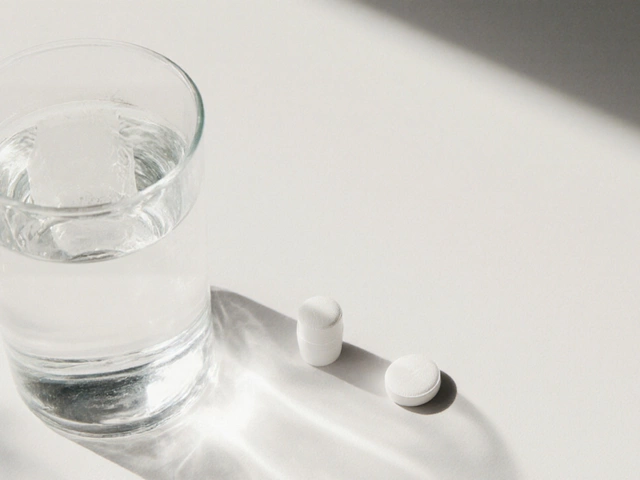If you ever raided your grandma’s medicine cabinet as a kid, you probably found some pale green goop with the smell of leafy freshness. Just about every Indian family has a pot of it somewhere, sitting on a kitchen windowsill or a sunny balcony. I'm talking about aloe vera – the plant with a reputation for healing just about anything. Burns, cuts, acne, even stubborn heartburn–it’s the go-to fix for so many everyday woes. It sounds almost mythical, but there’s a reason why it’s been called “the plant of immortality” since the time of the Pharaohs. I still remember Neha insisting we apply fresh aloe gel on our sunburned noses after a Goa trip. Call it old-school, but it really worked. So, what’s in this spiky, squishy-leafed little wonder that makes it such a global favorite?
The Science Behind Aloe Vera’s Healing Magic
Break open one of those thick aloe leaves, and you’ll find a clear, sticky gel inside. That gel is loaded with over 75 active compounds—vitamins like A, C, E, B12, minerals including calcium, magnesium, zinc, and special stuff like enzymes and amino acids. Aloe vera’s most famous trick? It soothes and cools the skin better than any store-bought lotion. The reason is simple: one of its key ingredients, aloin, gives powerful anti-inflammatory and antibacterial effects. Studies from 2024 in The Journal of Herbal Science found that topical aloe gel reduced wound-healing time by 46% compared to standard treatments. That’s almost half the usual recovery time, which is honestly pretty wild when you think about it.
Burn yourself on a hot pan or get a nasty mosquito bite, and the first thing you want is that cooling aloe slime on your skin. It reduces redness, pain, and swelling, plus it helps prevent infection because it fights off certain bacteria and fungi. Got acne? Aloe speeds up healing and soothes irritation without drying out your face as much as harsh chemicals. Even for serious skin troubles like psoriasis and eczema, dermatologists sometimes suggest using aloe alongside other treatments because it keeps things moist and itch-free.
But aloe isn’t just a skin hero. When taken in small, safe doses, it’s been used for thousands of years to help with digestion. The natural compounds in aloe juice (minus the bitter yellow ‘latex’ just under the leaf’s skin, which can be too harsh) seem to soothe heartburn, and help with IBS or chronic constipation. Just be careful—go overboard, and you could run into cramps or diarrhea. In 2023, the Indian Council for Medical Research shared data showing moderate aloe consumption helped reduce acid reflux symptoms for 72% of trial participants. Not bad for a garden weed.
If you’re always on your feet or play sports, aloe’s anti-inflammatory powers may even help joints and muscles heal up faster. Some runners rub a homemade aloe gel on sore knees post-marathon with surprising results, while footballers swear by aloe’s ability to reduce swelling following minor sprains. There’s even early (but promising) research about aloe improving blood sugar levels and lowering cholesterol, though here you need a doctor’s okay before you start eating spoonfuls of the stuff.

Everyday Aloe: From Your Balcony Pot to the Bathroom Cabinet
No joke—if you have one potted aloe at home, you’ve got your own first-aid kit. Here are some no-nonsense tips that have worked in my own household (even Bella the cat stays clear—she hates the sticky smell!).
- Burns or Scalds: Cut off a fleshy leaf, scoop out the jelly, and dab it right on the sore area. That instant cool sensation isn’t just soothing—it genuinely speeds up cell repair.
- Aftershave Trouble: Rub a bit of gel on those razor bumps. You’ll probably notice less irritation and the skin calm down by morning.
- Pimple Panic: Overnight spot treatment—apply aloe gel directly to the bump. Gentle, non-drying, and won’t make your skin red.
- Dandruff Rescue: Mix aloe gel with a little coconut oil, massage into your scalp, wait 10 minutes, and shampoo off. Bye-bye flaky scalp.
- Digestive Soothe: Check with a professional, but if you get the green light, add a tablespoon of edible aloe juice (the kind sold specifically for consumption) to water or a smoothie for reflux.
- Minor Cuts and Scratches: Even with clumsy hands in the kitchen, just slap some fresh aloe gel onto a nick. It’ll help keep things clean and speed healing.
- Sunburn SOS: A thick layer of aloe after a beach trip makes everything hurt less, and your skin peels way less.
Even though aloe is super safe for external use, eating or drinking it should be careful and always approved by someone who knows what they’re doing. Remember, the yellowish sap under the skin (called latex) can be a strong laxative and actually dangerous for some people.
Here’s a fun fact. Do you know why celebrities and skincare brands still worship aloe when there are now a billion creams for everything? Because even modern scientific testing can’t beat alba–the plant’s anti-oxidants and nourishing goes deep, protecting against pollution, stress, and all the other stuff that makes skin look way older than it should. Aloe doesn’t just work for emergencies; you get better results when you use it every day as a skin moisturizer or calming serum.
| Benefit | Application | Scientific Backing/Stat |
|---|---|---|
| Soothes Burns | Apply gel directly on burns | Speeds healing by up to 46% (2024, Journal of Herbal Science) |
| Acne Treatment | Spot-treat with gel | Improved healing and less irritation in 67% of cases (Derm India, 2022) |
| Digestive Aid | Ingest edible gel/juice | Heartburn reduction in 72% of subjects (ICMR, 2023) |
| Anti-Inflammatory | Topical on joints/muscles | Noticeable pain relief (Indian Journal of Orthopedics, 2022) |
| Scalp/Dandruff Care | Mix in with oil, apply to scalp | Reduced itch and flakes in 52% (Hair Health Review, 2023) |
Next time you see aloe lining some medicine aisle, remember: it’s got more science behind it than a lot of those expensive, glossy-packaged miracle creams on the shelf. And when you’re tempted to toss the drooping pot on your windowsill—don’t. That green friend isn’t just a houseplant; it’s your silent health partner, ready to step in at a moment’s notice.

Making the Most of Aloe Vera: Tips, Cautions, and Daily Use
Want to actually add aloe to your daily routine? Here’s what I’ve picked up over the years. Buy a healthy plant (try for a mature, thick-leaf variety) from a nursery, water it once the soil gets dry—that’s it. Harvesting is easy: snap off an outer leaf, slice away the spiky sides, then peel off the green skin and scoop the clear gel out. For the fridge, keep extra gel in a small glass jar for up to 7 days—nature’s own mini travel-size product.
For an unbeatable face mask, mix aloe gel with a teaspoon of honey and a few drops of lemon. My skin looks brighter (and less tired) the next day, even if Bella woke me up at 3 am. And when Neha’s hair cries out for rescue, she skips the serums and rubs aloe into the ends for thirty minutes before a wash. No more flyaways, smooth hair by dinnertime. You can even blend aloe gel with a drop of tea tree oil for a cooling foot cream after a long run or tough day on your feet.
There’s always a temptation to go all-out, but a word of caution: eating aloe in large quantities isn’t smart. The latex portion just under the leaf skin is a natural laxative, banned in some countries as a commercial ingredient. It can mess with kidneys and cause cramps if you’re sensitive, pregnant, or have tummy problems. Stick to edible products sold for drinking—they’re filtered and safe—unless your family doctor gives the green light for raw gel.
Want to get creative? Freeze small cubes of aloe gel for instant burn relief or to calm a swollen pimple. Add a few chunks to a home-blended smoothie for a cool, hydrating twist. Gentle enough for kids (after patch testing), and weirdly, some pet owners even use the outer gel to calm itchy dog paws (but not for cats like Bella—never let cats lick it, it’s toxic for them!).
People swear by aloe for mouth ulcers and healing after dental work—a little dab in the right spot, and soreness seems to fade. For athletes or anyone doing manual work, keep a tube of aloe gel on-hand in your gym bag to fix up scrapes, minor burns, and sore skin. If you’re into ayurveda, you’ll find aloe blends (called ‘kumari’ in many classical texts) in plenty of old healing formulas for liver care, hormone balance, and detox. But always run these by a pro; do-it-yourself dosing can backfire for sensitive folks or those on other medicines.
Even in modern times, the *strongest* weapon aloe vera has is its sheer versatility. One plant, dozens of uses, and thousands of years of trusted results. You don’t need a pharmacy full of synthetic creams when you’ve got a windowsill garden with a squishy, healing powerhouse waiting to help. If you ever forget just how multi-talented it is, try to imagine all the little emergencies that a bottle of aloe has solved in your own life. Chances are, you’ll come up with more stories than you thought.





